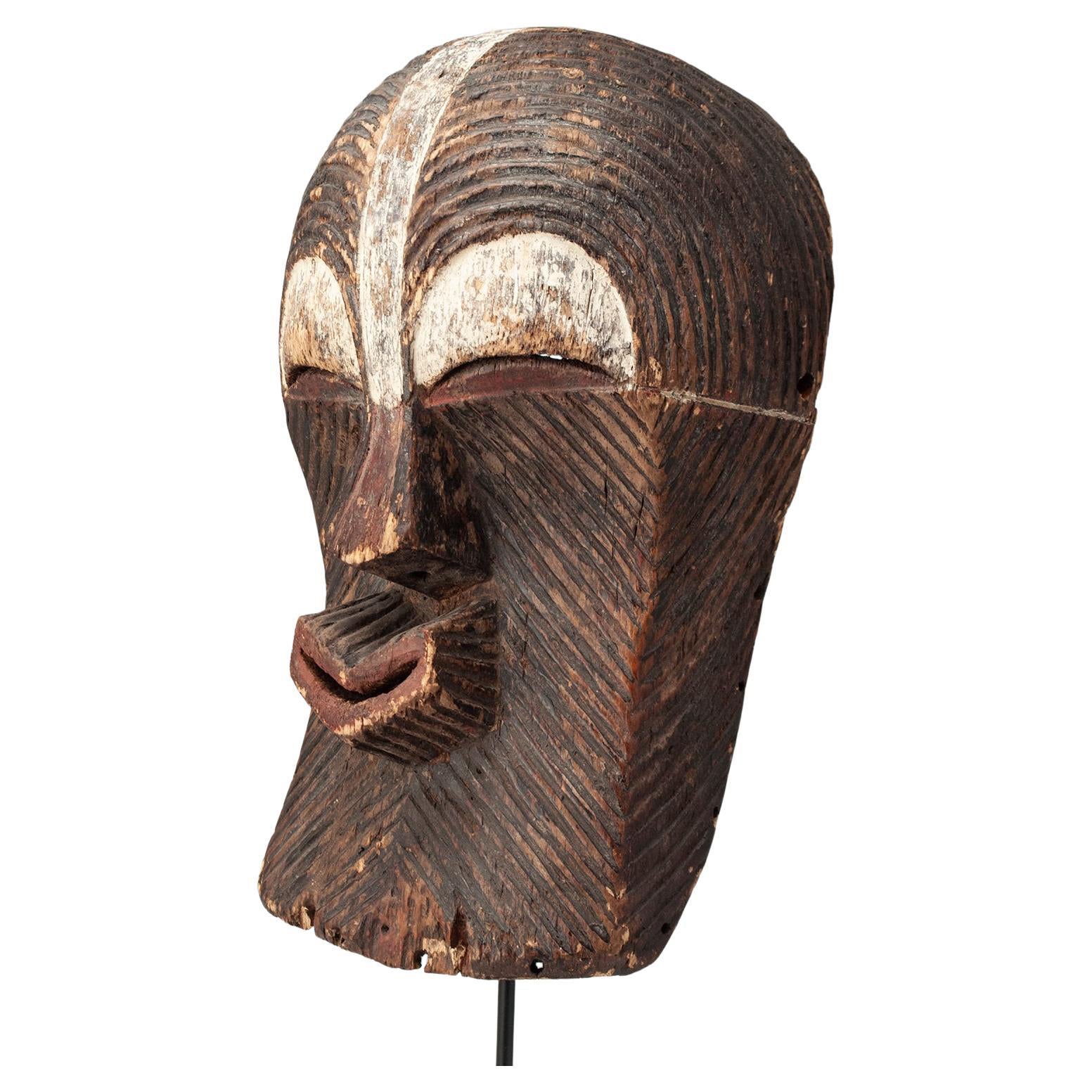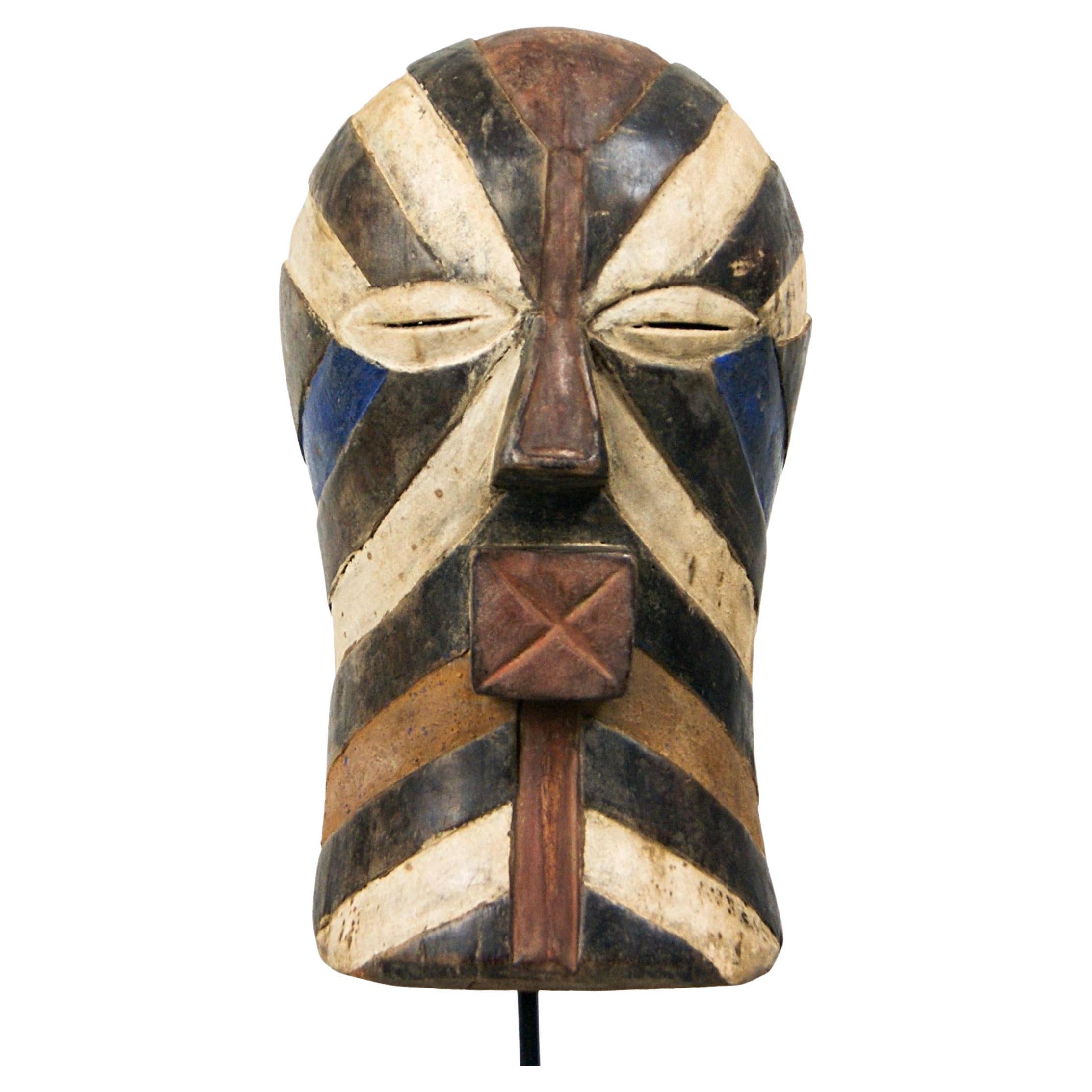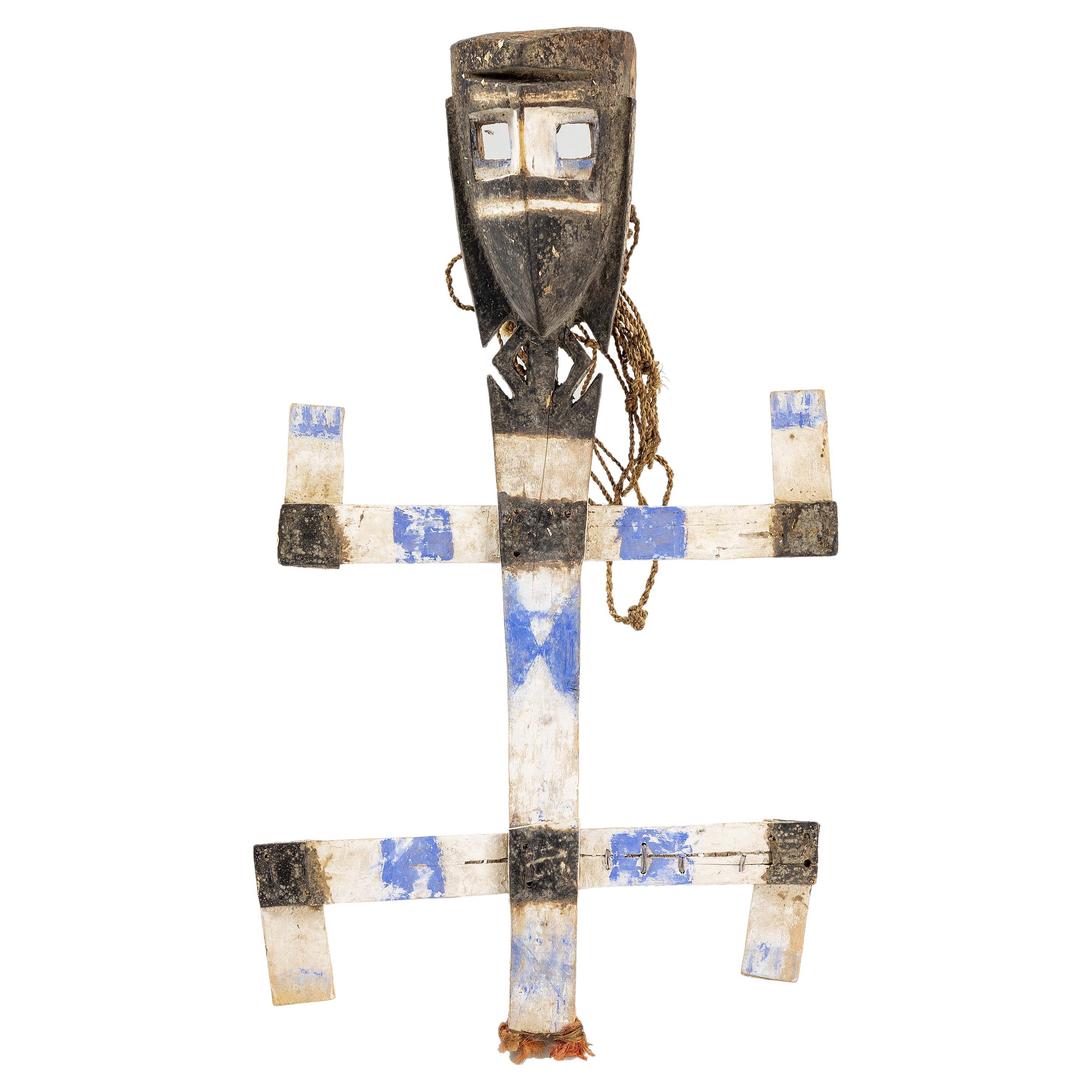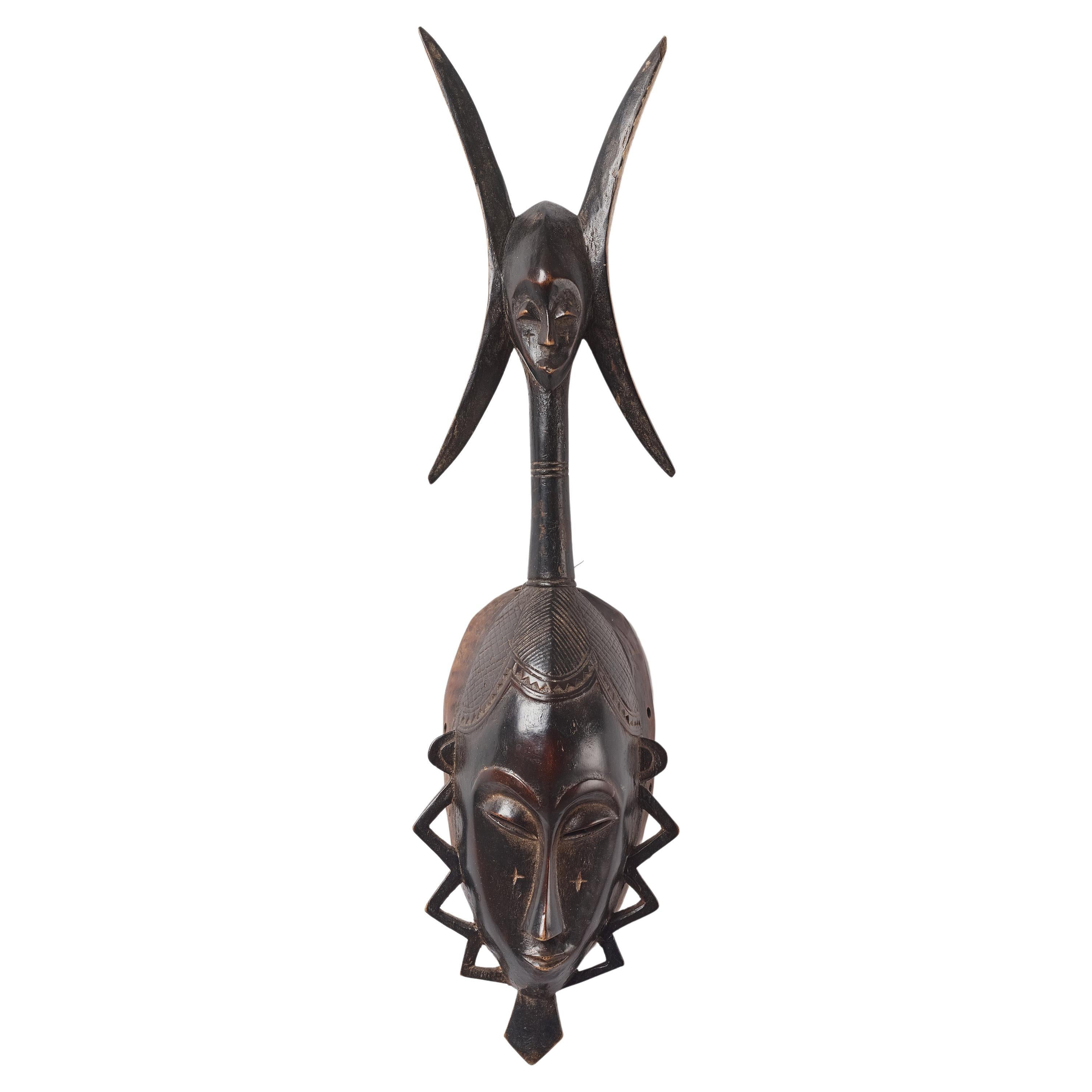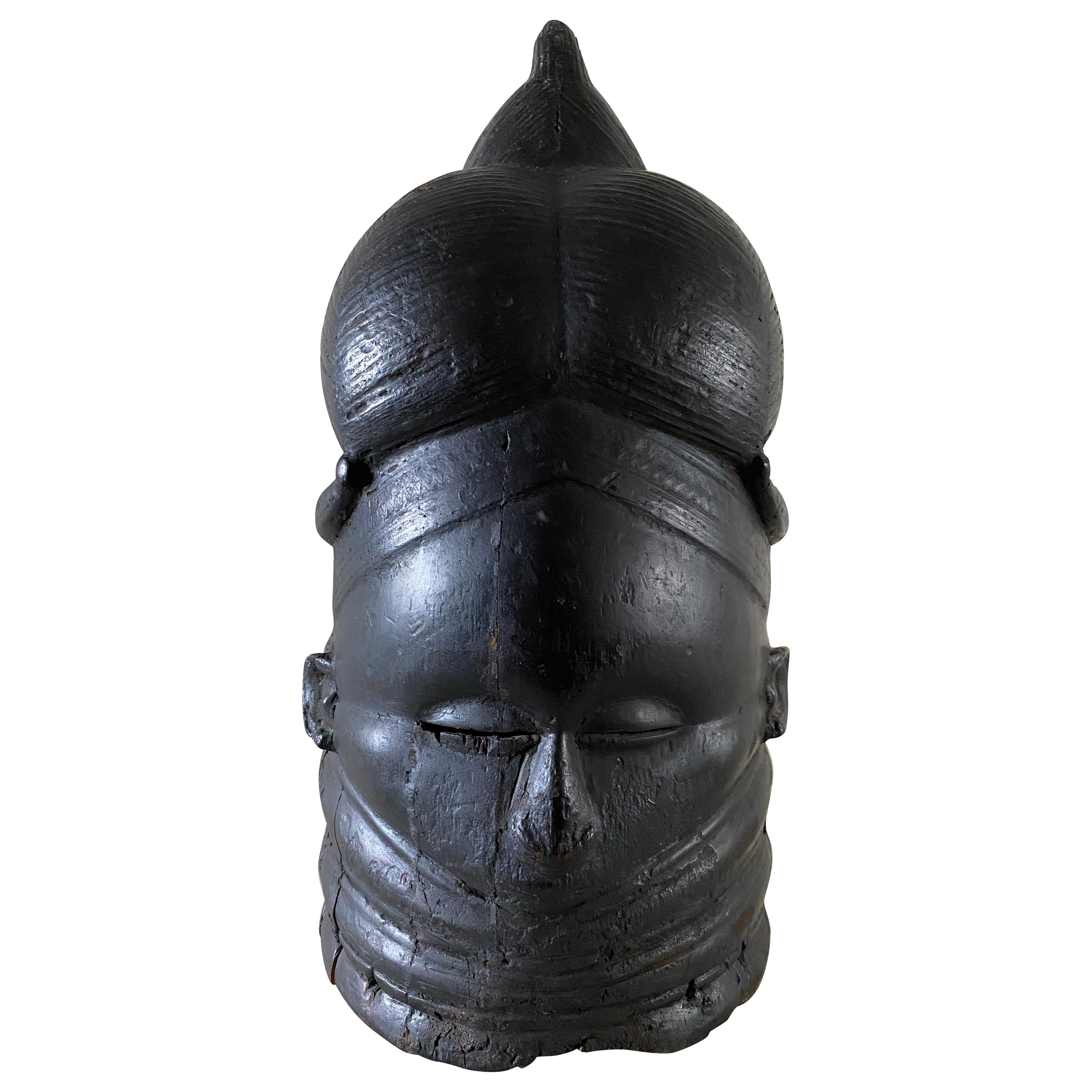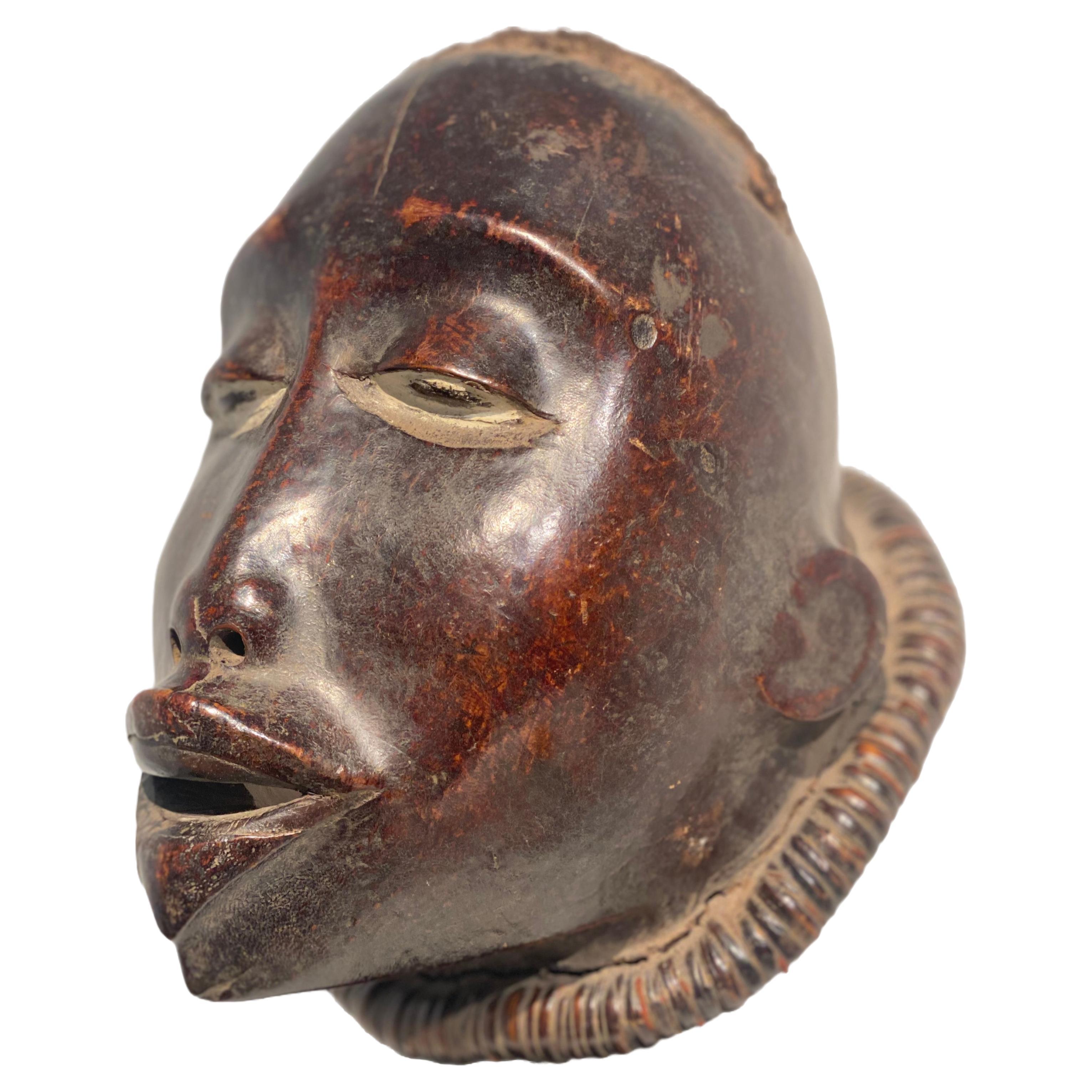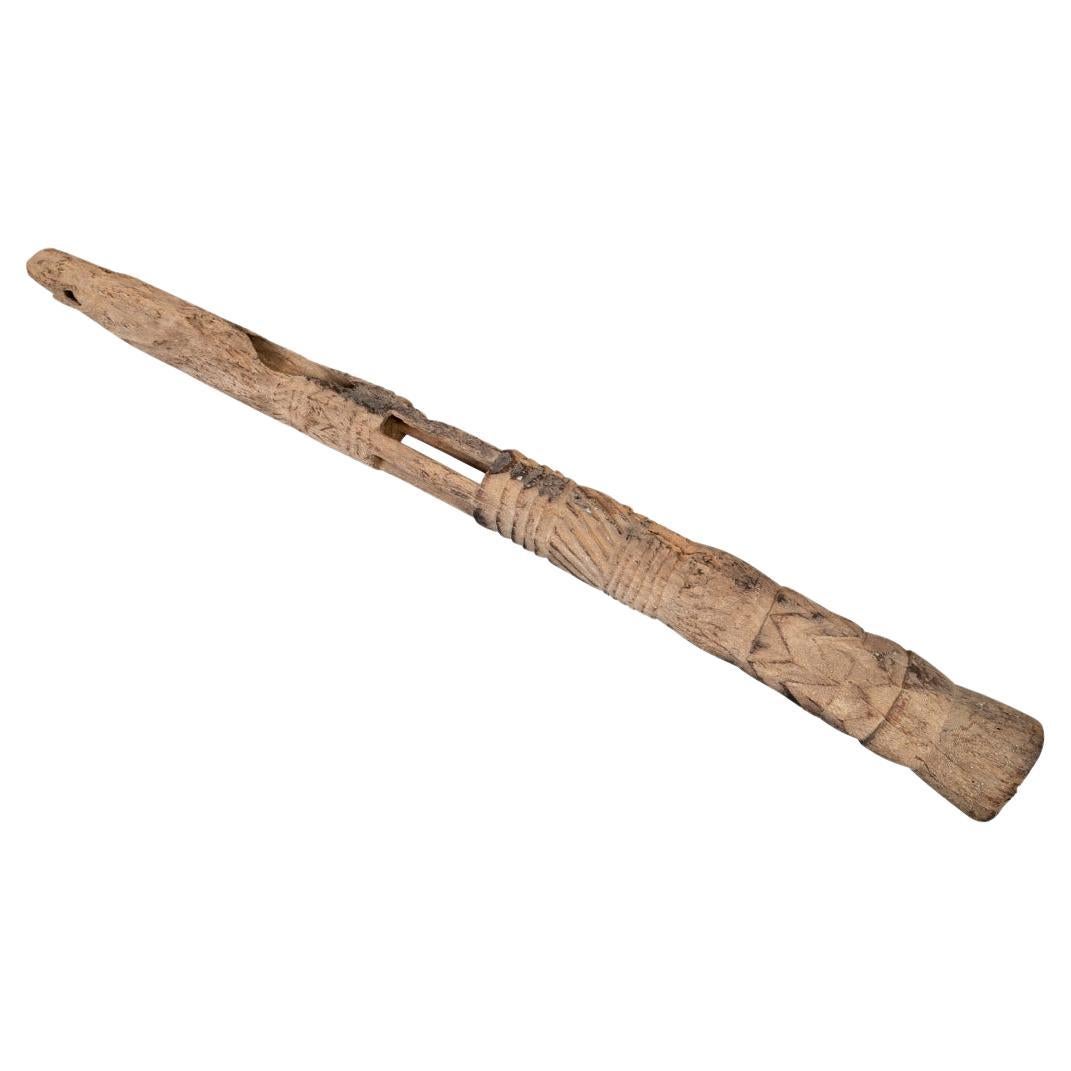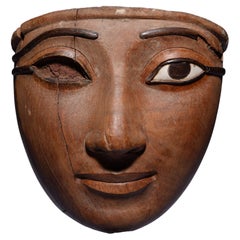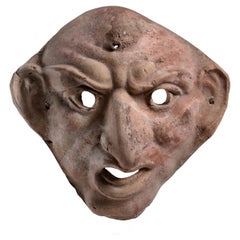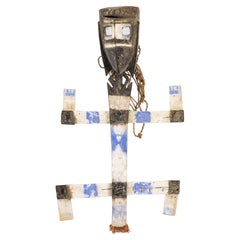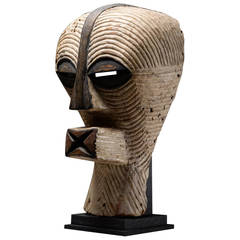
Central African Songye Tribe Wooden Kifwebe Mask
View Similar Items
Want more images or videos?
Request additional images or videos from the seller
1 of 6
Central African Songye Tribe Wooden Kifwebe Mask
About the Item
- Dimensions:Height: 16.5 in (41.91 cm)Width: 9 in (22.86 cm)Depth: 6 in (15.24 cm)
- Style:Tribal (In the Style Of)
- Materials and Techniques:
- Place of Origin:
- Period:
- Date of Manufacture:1900
- Condition:Wear consistent with age and use. Small fragment reattached on the proper right side. A small crack running from the 'chin' of the mask to the eyelid stable with minor infill. Chipping and wear elsewhere commensurate with age.
- Seller Location:London, GB
- Reference Number:1stDibs: LU105221958202
About the Seller
5.0
Recognized Seller
These prestigious sellers are industry leaders and represent the highest echelon for item quality and design.
Established in 2008
1stDibs seller since 2014
100 sales on 1stDibs
Typical response time: 8 hours
Associations
LAPADA - The Association of Arts & Antiques DealersInternational Confederation of Art and Antique Dealers' AssociationsThe British Antique Dealers' Association
More From This SellerView All
- Exceptional Egyptian Sarcophagus MaskLocated in London, GBExceptionally Fine Wooden Sarcophagus Mask Third Intermediate Period, 21st Dynasty, circa 1069-945 BC. Acacia wood, rosewood, hippopotamus ivory Masterfully carved from a single piece of fine-grained hardwood, the present mask is characteristic of the most exquisite funerary art made during the 21st Dynasty, and was probably commissioned for a particularly high-ranking individual. The oval face displays a gently smiling mouth with full, outlined lips, furrows at the corners and a bow-shaped philtrum. The straight nose with rounded nostrils, the cheeks full and fleshy and the large, almond shaped eyes with heavy lids and tapering cosmetic lines, set below long, sweeping eyebrows. Social collapse across the Mediterranean in the Late Bronze Age meant that the 21st Dynasty in Egypt was a period of great turmoil. Trade routes were disrupted, governments collapsed, and mass migration occurred. Economic scarcity meant that traditional funerary practices in Egypt were also affected, with a lack of material and financial resources leading to the reuse of preexisting material. As a result, during the 21st Dynasty, 19th and 20th Dynasty coffins changed ownership rapidly and were heavily recycled for new purposes. Tombs were also unmarked allowing them to be shared by many people. These new practices brought forth a shift in the understanding of funerary paraphernalia. No longer important objects owned forever by the deceased, they were now simply seen as short-term transformative devices, whose symbolic and ritualistic meaning could be appropriated for others. However, paradoxically, the art of coffin-making also reached new heights during this period, and many of the richly dec- orated “yellow” coffins, characteristic of the 21st Dynasty, are remarkable works of art in their own right. Indeed, knowing that coffins were being reused throughout Egypt, the Egyptian élite set themself apart by commissioning lavish sarcophagi decorated with the images and texts meant to help guide them to the afterlife, and which would otherwise have adorned the tomb walls. As coffins were the chief funerary element which now identified the dead and allowed them a physical presence in the world of the living, their quality and appearance were of the utmost importance. The traditional coffin ensemble was made of three parts: a wooden mummy cover, which laid directly atop the mummy, an inner coffin, and an outer coffin, both made of a lid and case. Additional decorative elements, such as masks, were carved out separately and later glued or pegged to the lids. After the completion of the painted decoration, the sarcophagus was covered in a varnish to give it its yellow colour. Gilding was sometimes used for the coffins of the high priests’ families, notably on parts representing naked skin, such as the face mask. However, some of the élite tactically avoided gilding altogether as to ensure that their coffin would not be looted. When manufacturing the inner and outer coffins, particular attention was paid to the woodwork. Displaying the skill of the carpenter, this type of funerary art has largely remained unparalleled throughout Egyptian history. The principal wood used to craft the present mask is Acacia nilotica. The evergreen Egyptian acacia was considered sacred and said to be the tree of life, the birthplace of the god Horus, as well as symbolic of Osiris, the god of the dead and resurrection. The modelling of the face in the wood is superb, but the inlays also help mark this mask out as exceptional. Inlaid eyes and eyebrows were extremely rare and reserved to the finest and most expensive coffins. Traditionally, eyes were made of calcite, obsidian, or quartz, and eyebrows of coloured glass paste or bronze. Here, the pupils, eyebrows, and cosmetic lines are inlaid with Dalbergia melanoxylon, a rare type of wood which belongs to the rosewood genus. In antiquity, however, it was known as Ebony of the Pharaohs, from the Egyptian word “hbny”, meaning dark timber, because of its black, lustrous appearance. An extremely dense and hard wood requiring significant skill to work with, ebony was a luxury material highly coveted by the pharaohs themselves, to make furniture, decorative and funerary objects. The wood was imported with great effort from the southern Land of Punt, most likely modern Sudan, Ethiopia, Djibouti, and Eritrea, alongside other luxury goods such as gold and ivory. A magnificent ebony throne, recovered in the tomb of King Tutankhamun, illustrates the incredible aesthetic potential of this material and why it was so highly valued by Egyptian royalty. Only élite members of Egyptian society could have afford- ed Ebony of the Pharaoh inlays for their funerary mask. The sclerae on the present piece were once both inlaid with hippopotamus ivory. Whiter than elephant ivory, this type of ivory is also denser, and more difficult to carve. The use of this luxury material, reputed for its gleaming appearance, enhances the lifelikeness of the eyes. For the Egyptians, hippopotamus ivory was imbued with magic powers. The hippopotamus was indeed both feared and venerated due to its aggressive behaviour. Whilst the male hippopotamus was associated with danger and chaos, the female was benevolent and invoked for protection, especially of the house and of mothers and their children, through the hippopotamus goddess Tawaret. Thus, not only was hippopotamus ivory used as an inlay and to make practical objects, such as combs and clappers, but it was also used to make talismans like apotropaic wands or knives. Made during a time of scarcity where few could afford made-to-order coffins, the present mask could have only belonged to one of the highest-ranking individuals in society. Undoubtedly one of the finest Egyptian coffin...Category
Antique 15th Century and Earlier Egyptian Egyptian Figurative Sculptures
MaterialsFruitwood, Hardwood
- Hellenistic Grotesque Theatre Mask of MaccusLocated in London, GBGrotesque theatrical mask of Maccus Late Hellenistic or Early Imperial period, circa 1st century B.C. – 1st century A.D., likely from Southern Italy. Terracotta with remains of pin...Category
Antique 15th Century and Earlier Italian Classical Roman Figurative Scul...
MaterialsTerracotta
- Late Bronze Age SwordLocated in London, GBSaint Nazaire Sword, Late Bronze Age, circa 800-900 B.C. An exceptionally well preserved Bronze Age sword, with elegant, finely incised decorations,...Category
Antique 15th Century and Earlier French Abstract Sculptures
MaterialsBronze
- Ancient Greek Corinthian HelmetLocated in London, GBCorinthian helmet with Bull Horns and Lotus Flower Decoration. Archaic Period, c.550-500 BC. Cast, hammered and incised bronze. An exceptionally well preserved example of one of the most iconic ancient Greek...Category
Antique 15th Century and Earlier European Classical Greek Mounted Objects
MaterialsBronze
- Gogotte FormationLocated in London, GBGogotte formation circa 30 Million y/o Measures : 42 x 21 x 63 cm. A magnificent example of a gogotte formation, composed of thick swirls and fo...Category
Antique 15th Century and Earlier French Natural Specimens
MaterialsSandstone
- Natural Gogotte FormationLocated in London, GBA magnificent example of a gogotte formation composed of thick swirls and folds of sparkling sandstone. Discovered in the Oligocene sand dunes of Fontainebleau, France, formed circa 30 million years before present or later. The incredible, almost otherworldly appearance of gogottes may easily be mistaken for the work of a most talented artist. In fact, these sandstone sculptures are entirely natural in origin. They have been found in multiple locations but those from Fontainebleau, such as the present example, are the most remarkable. Thirty-five million years ago, a sea covered what is now the forest of Fontainebleau, and dunes of exceptionally fine and homogenous sand formed. As silica-rich water filtered through this sand, it turned into stone. The flow of water finely modelled the sandstone into the aesthetic concretions we now know as gogottes. These are rare and are only found sporadically several metres deep into the ground. They owe their sparkling white appearance to the extreme and unmatched purity of the Fontainebleau sand, sometimes reaching a composition of 99.9% silica. Each of them is unique – a masterpiece slowly fashioned by the hands of Nature. The intriguing name of “gogotte” was coined by French geologist Claude Guillemin (1923- 1994), who was inspired by the children’s book series Babar the Elephant. In one of the books, a group of monsters called Gogottes are shown hiding behind rocks. These rocks reminded Guillemin of the sandstone concretions...Category
Antique 15th Century and Earlier Natural Specimens
MaterialsOther
You May Also Like
- Tribal Style Songye Kifwebe Mask, D. R. CongoLocated in Point Richmond, CAThis graphic Songye Kifwebe mask has fine carved lines curved over the eyes and diagonal lines radiating from the nose and mouth in classic Kifwebe form. ...Category
Late 20th Century Congolese Tribal Masks
MaterialsWood
- Old African Songye Female Kifwebe Wall Mask with Expressive Face Large SizedLocated in Torquay, GBLarge sized Songye Female Kifwebe mask from The Congo circa 1920s. Traditionally, the Kifwebe mask is very symbolic in the Bantu culture of central Africa. Its striking colours and carving symbolise the battle between good and evil. Female Kifwebe masks represent femininity, the continuation of life and a good omen. These masks were used for wedding ceremonies, reproduction rituals and other such occasions. This large mask...Category
Early 20th Century Congolese Tribal Tribal Art
MaterialsWood
$1,799 Sale Price24% Off - African Mask 'Kanaga' Dogon tribe, Mali C 1950Located in Paris, FRMask 'Kanaga' Dogon tribe, Mali Circa 1950 Provenance: Swedish private collection, from the 1970s. Then inherited within the family One of the most popular types of masks in the Sang...Category
Mid-20th Century Malian Tribal Tribal Art
MaterialsWood
- Female Kifwebe Mask with old collection label, Luba-Songye People, DR CongoLocated in Leuven , BETraditionally, Kifwebe masks were created and worn by members of the secret masking society, Bwadi Bwa Kifwebe, of the Luba and the Songye People living in the central part of the Co...Category
20th Century Congolese Tribal Art
MaterialsWood
- African mask Yaure tribe Ivory Coast Circa 1950Located in Paris, FRAfrican mask from Yaure tribe in Ivory Coast Circa 1950. Beautiful dark patina. Swedish private collection, from the 1980s then inherited within the family. Yaure tribe art is renow...Category
Mid-20th Century Ivorian Tribal Tribal Art
MaterialsWood
- Kusu wooden ancestor fetish ca 1900 DR Congo Africa Central African Tribal ArtLocated in Leuven, BENicely carved Kusu / Congo statue with beautiful face / almond shaped eyes and triangular face with beard. Top of the head is a big hole to charche the po...Category
Early 20th Century Congolese Tribal Tribal Art
MaterialsHardwood
Recently Viewed
View AllMore Ways To Browse
African Carved Heads
African Mask White
Abstract African Mask
Antique African Tribal Mask African
Antique African Tribal Masks
Mask Congo
Wooden Tribal Mask
African Tribal Wooden Sculpture
L L Bean
African Wooden Mask
African Carved Wooden Masks
African Mask Congo
Antique African Wooden Sculptures
Songye Mask
Kifwebe Mask
Songye Kifwebe
Antique African Wooden Mask
Luba Mask
